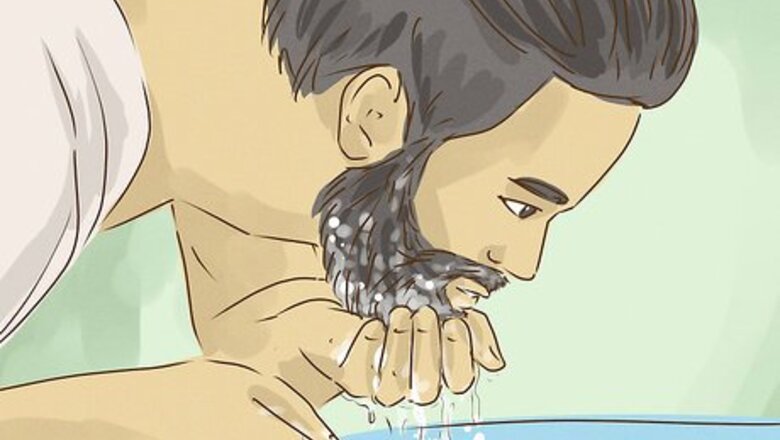
views
Cleaning and Preparation
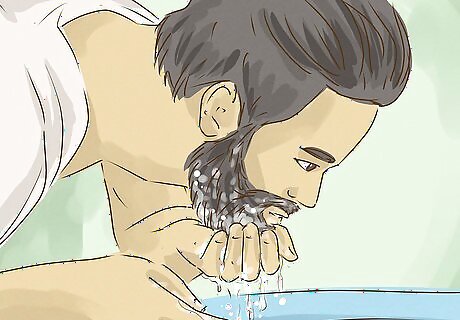
Wash your beard thoroughly. It's important to start with a clean and dry beard. Your facial hair gets just as oily as the hair on your head, so give it a good washing to ensure a clean trim. Scrub your beard with shampoo in the sink or shower, then pat it dry with a towel. Avoid shampoos that dry out your skin.
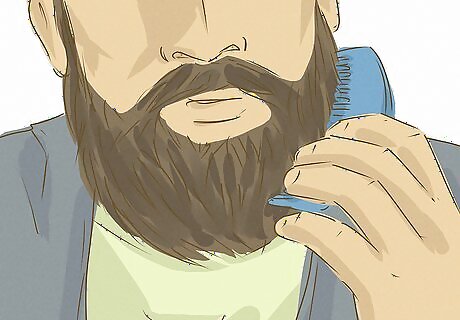
Comb your beard. Combing eliminates tangles and makes your beard easier to trim. Following the grain of your beard's natural growth, guide your comb through the hair growing along one side of your jawline. Start at your ear, moving down towards your chin. Don't "fluff out" the beard by combing against the grain. Comb your beard straight. You can always fluff out your beard later with your hands.
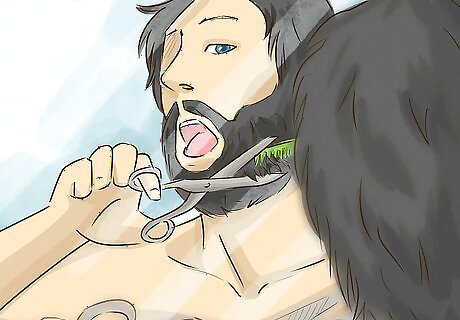
Begin cutting in front of a large mirror. Make sure that you've got everything you need: scissors or clippers, comb, towel, and any products you plan on using. You'll also need a reachable outlet if you're using electric clippers. A multi-angle or three-way mirror can be helpful in seeing the hard-to-reach areas of your beard.
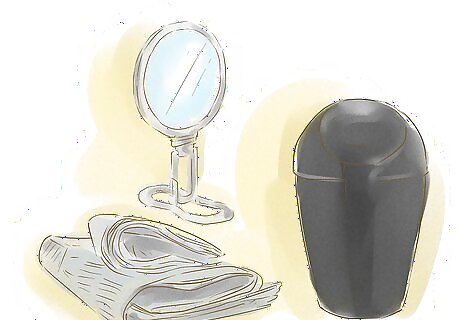
Prepare a receptacle for the beard trimmings. Clogging the sink with tiny hairs is a good way to irritate your housemates. Likewise, cleaning them up after the fact is difficult and frustrating. Eliminate an annoying clean-up by doing some work ahead of time. Get a small bin to catch the loose hair. Lay out some newspaper or a towel to catch the hair. If you've got a stable portable mirror, trim your beard outside. Discarded hair will simply blow away!
Trimming with Electric Clippers
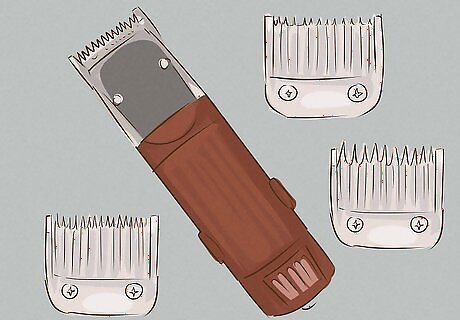
Select a guard. Most clippers come with several snap-on plastic guards. The guards ensure an even trim at the length you want - no one wants to cut their beard too short. If you're not sure which of two guards is best, start with the longer attachment first. You can always go back over the beard with a shorter guard afterward, but if you trim too short, you can't put it back on. If you don't have a guard available, you can hold a comb in front of the clippers and trim off the hair that slips through the comb's teeth.
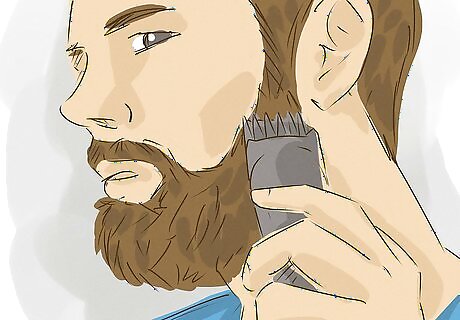
Turn the trimmer on and with a gentle but firm pressure, trim each side of your face, working along the grain using long smooth strokes. Maintain balance between each side of your face by always starting at the ears and working down. The guard should keep the trimmer from irritating your skin or cutting too much hair.
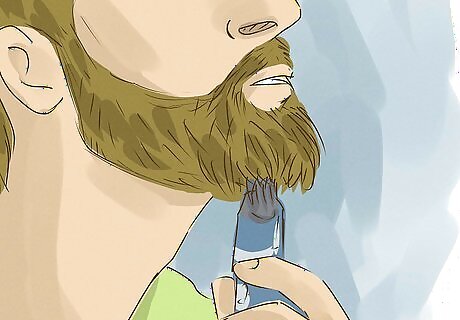
Trim your mustache and chin. Start under your nose and move toward the corner of the mouth, then proceed down to your chin. Pay special attention to hard-to-reach areas directly under your nose. Keep your mouth closed to avoid a mouthful of hair! Depending on the length of your beard, it may be easier to trim the mustache separately with scissors.
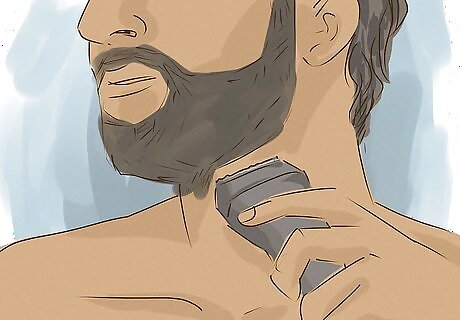
Finish the trim with a clean edge. Remove the guard from the trimmer and trim along your neckline to remove the remaining hair on your neck. Use your jaw as a straight edge. If you like, you can also lather and shave your neck, depending on how you like it styled. Some prefer a clean cut-off line for their beard, while others prefer subtle neck stubble.
Clipper Troubleshooting and Maintenance
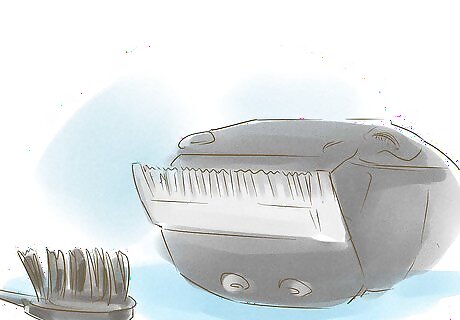
Clean your clippers. Most clippers come with a maintenance kit that includes a small brush. After every shave, brush excess hair off of the blades and guard. This ensures that old hair does not build up and work its way into the clipper's interior, where it can interfere with the operation of the motor. If your clippers didn't come with a brush, you can use an old toothbrush or a bristly pipe cleaner.
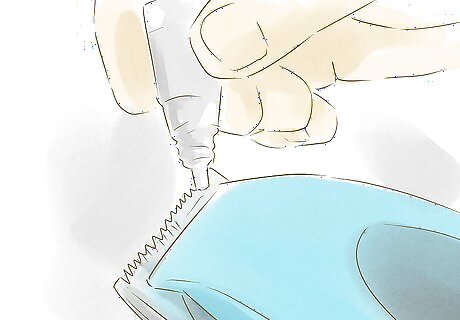
Keep your clippers sharp. Most clippers also contain a small bottle of lubricating mineral oil. After every several shaves, clean the blades with the brush, then apply a few drop of mineral oil along the clipper's teeth. Turn the clipper on for about twenty seconds. This allows the oil to spread along the blades, keeping them sharp and smooth. If your clippers didn't come with oil, contact the manufacturer before substituting your own oil - many household oils aren't suitable for clippers and will affect their performance.
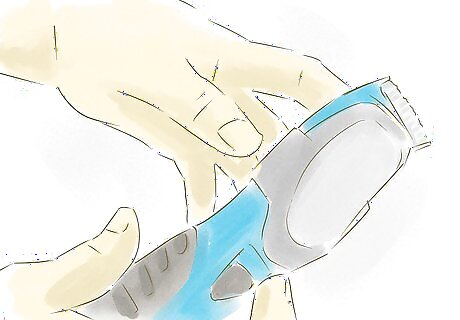
Be prepared for common problems. Well-maintained clippers should give you few problems. However, like any electric appliance, clippers can experience occasional performance issues. Here are a few of the most common complaints, with basic troubleshooting instructions: "My clippers make a very loud buzzing noise." Many clippers have a voltage regulator that resembles a screw on the side of the device. This can be easily adjusted with an included tool or an everyday screwdriver. Experiment with adjusting the voltage regulator in either direction until the noise stops. There is no risk of electrocution. "My clippers can't cut my hair." Your clippers may not be sharp enough or the internal motor may be losing power. Ensure that you're regularly cleaning and oiling the blades. If you clippers are noticeably slower, there may be an issue with the motor - it may be time to replace the clippers. Consult your manufacturer for warranty information. Alternatively, your hair may simply be too thick! Clear any hair that is jammed in the blades and try again with shallower cuts. "My clippers don't hold a charge." Over time, the battery in portable clippers can deteriorate. Most manufacturers can replace them - contact your manufacturer for more information. "My clipper's blades are crooked." It's possible for clipper blades to get bumped out of alignment. Realignment is not generally a difficult process, but it will differ based on the precise make and model of your clippers. Thankfully, most manufacturers will have online guides for blade realignment and amateur DIY instructions are easy to find.
Trimming with Scissors
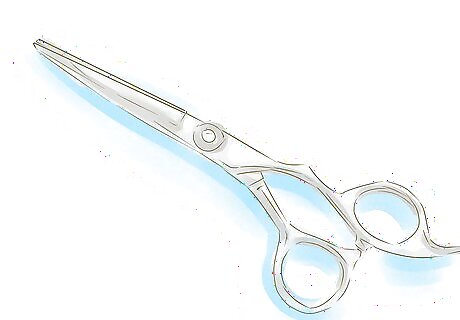
Select a pair of sharp, clean scissors, preferably barber's shears. Scissors are a good method for shortening a beard, but require a skilled hand for finer details, such as thinning or shaping. Make sure the scissors are rust-free and without major imperfections or notches in the blades that may tug on or pull your hair. Don't use kitchen scissors or garden shears. These can be too big and clumsy to maneuver. You don't want to cut yourself.
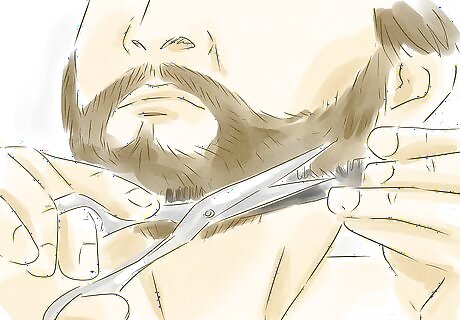
Use a comb as a guide. This will prevent you from cutting the hair too short. Try to imitate the way a barber gathers hair in a comb, then lightly clips it. Comb from your ear to your jaw, exposing a tiny amount of hair. Trim any hair which is on the outside of the comb's teeth. Use caution when performing this step. Begin by trimming very short lengths of hair - you can easily decide to trim more, but it is impossible to correct the mistake if you accidentally trim too much.
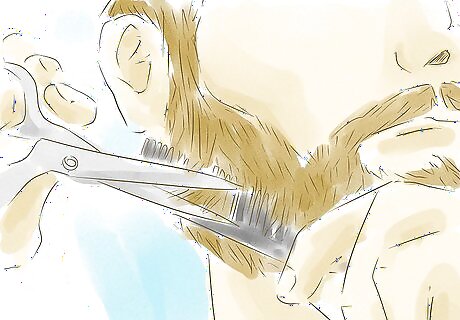
Repeat this process on the other side of your face. Continue cutting the beard evenly until you've reached the desired length. Comb the beard again to ensure you've got an even trim of the hair.
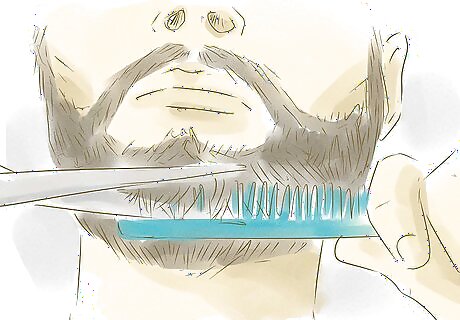
Trim your mustache and chin. Comb the hair straight down. In a straight line, trim any hair that falls below the line of your lip.
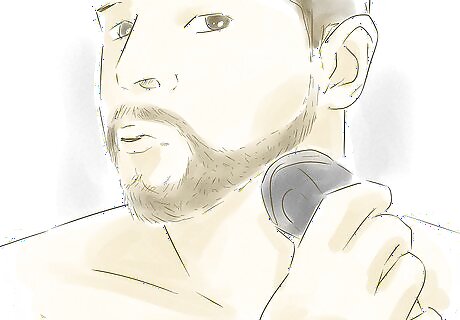
Finish with a clean edge. Using extra care, use the scissors to trim the hair as close as possible on your neck. If possible, use an electric trimmer for this step. If you're intimidated, you can simply lather and shave your neck with a safety razor to remove all the hair. This can be much easier than making the finishing touches with scissors.
Optional: Shaving Close for Clean Lines
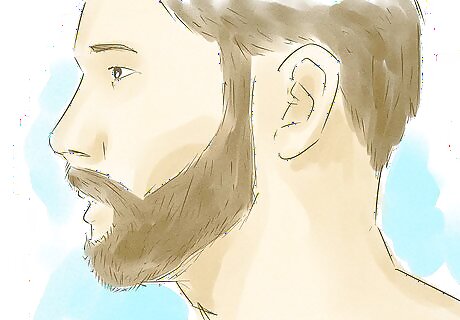
Choose a style with clean lines. Many styles of beard create dramatic contrasts with clean, abrupt lines where the hair ends and the skin begins. Even if you don't aim to dazzle anyone, you still might want to clean your facial hair up every once in a while. This process can be as simple as removing unwanted neck hair from a standard beard or as painstaking as leveling off your sideburns so that they match perfectly! Whatever the case, have a plan of action beforehand - razors shave all the way down to the skin, so big mistakes can change your style completely. There's no right way to shape a beard. However, the most common beard styles are maintained by shaving the neck below the chin and the upper part of the cheeks to prevent an "overgrown" look. Decide what's best for you.
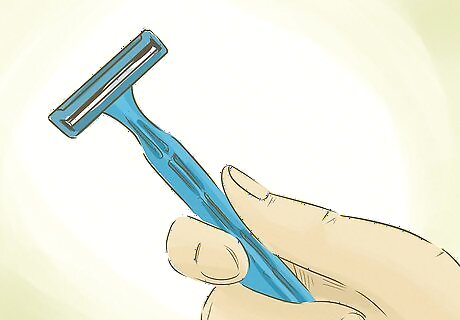
Get a razor. In the distant past, shaving required a well-maintained straight razor. Today, almost any supermarket will be stocked with plastic safety razors. What you use to maintain your clean lines is up to you - safety razors are cheap, easy, and convenient, but some prefer the elegance and precision of a classic straight razor. For more information, consult our comprehensive guide on How to Shave.
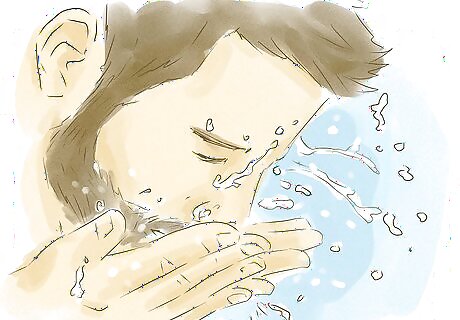
Prep your beard for shaving. Your goal is to get your beard (especially the areas around where you want your clean lines to be) warm and wet - it will be softer and easier to cut this way. This step allows for some variation. Here are some common methods: Splash some hot water on your face. If you have a soft beard (or you're just brave), no other preparation is needed, though you might want to repeat as needed to keep your beard warm and wet. Use hot water and lather. This is the most common method. Splash hot water on your face as above, then work shaving cream or oil into a lather on the spots you want to shave. If you have time, let it sit for a minute or two - your shave will be even more comfortable. Use a hot towel. If you've got the time, this method can be very relaxing. Wrap a warm, wet towel around your head so that it covers your beard. Allow the wrap to sit until it is cool. Remove, apply lather, and shave. Many like to shower before (or while) they shave because showering provides a constant source of warm water. If this sounds attractive to you, consider investing in a small shower mirror for a more precise shave.
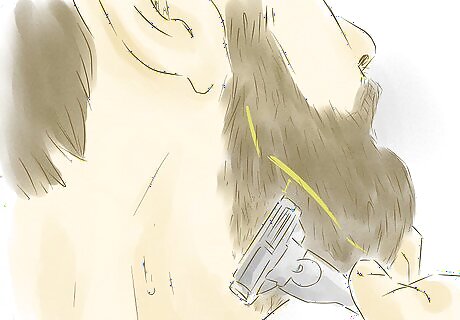
Make your first stroke a half inch away from the beard line. Be conservative - this way, you have some "wiggle room" if you make a stroke that's too big. If you've used lather and you can't see where you're shaving, it's OK to wipe some off with your finger. Even a very thin layer of lather will work well.
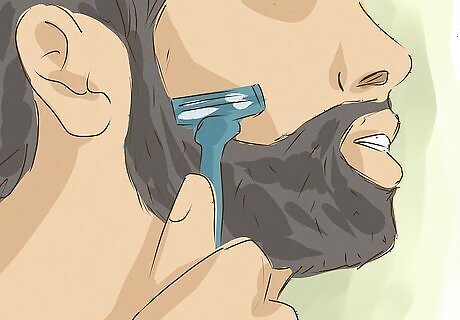
Shave down your desired beard line. Use a variety of stroke directions as long as none are painful or go directly against the grain of your hair - strokes that are parallel to your beard line can be used for large, approximate cuts, while strokes that are perpendicular to your beard line can be used to precisely cut into the beard line for smaller adjustments.
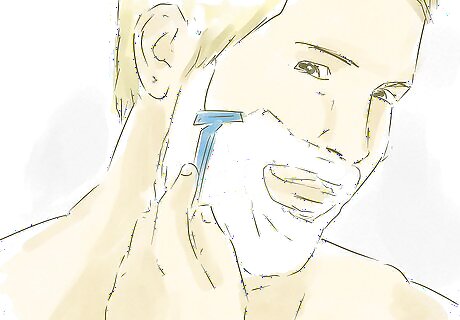
Repeat for the other side of your face. A mirror and a good light source are essentials - you need to be able to see all parts of your face clearly if you want a perfectly symmetrical shave.
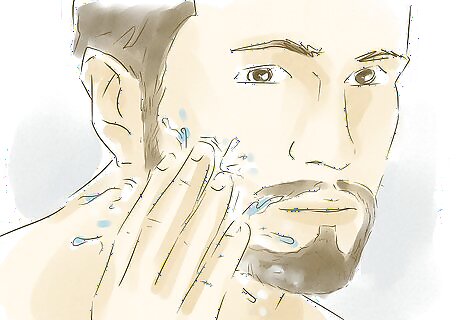
Remove any remaining lather and rinse your face with cold water. Cold water tightens the skin and will help to stop the bleeding from any small nicks or cuts. Our How to Shave Your Face guide contains further instructions on treating shaving cuts. When your face has been rinsed, you'll be able to see any small imperfections or spots you missed. Usually, minor adjustments can be made without re-applying a lather.
Beard Styles and Variations
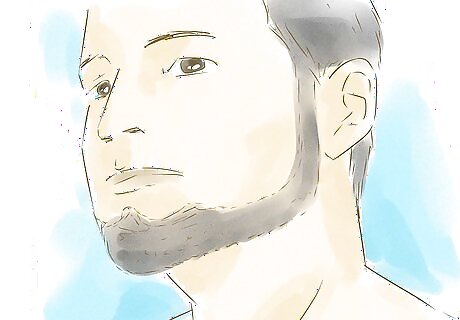
Leave the chinstrap. Channel your inner Abe Lincoln by trimming off the mustache completely and leaving the rest. This is easiest with a beard trimmer. Follow all the above steps for trimming and then remove the mustache with the trimmer. Maintain by shaving your upper lip regularly with a razor. If you can't, at least keep it significantly shorter with the trimmer.
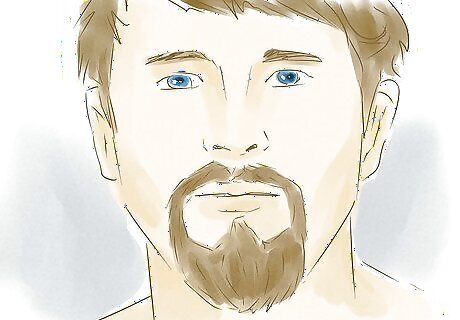
Rock the goatee. Trim your sideburns, leaving only a tough-looking patch around your mouth. Imagine a line that runs from the sides of your nose down the corner of your lips and shave everything between that line and your ear, leaving the hair around the chin and the mustache. Experiment with leaving different lengths of sideburn, or, for a style called the fu-manchu, removing the hair under the bottom lip and the chin.
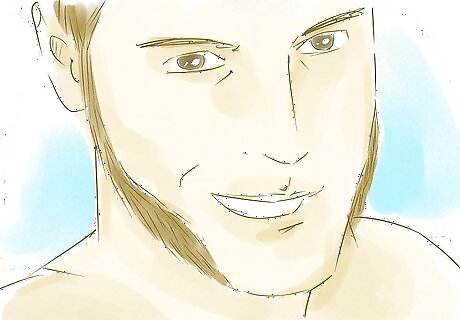
Try out the muttonchop. This is essentially the opposite of the goatee, leave the sideburns long and remove the mustache, chin, and neck beard. Also try leaving the mustache for a variation on the chinstrap.
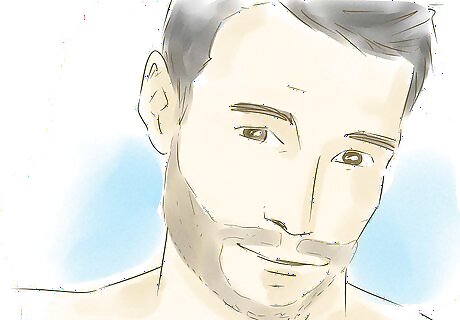
Trim it extra short for the five-o'clock shadow. Take off the trim guard or very carefully use scissors to cut (almost) everything off. You want to create an all-over, very short beard. This is a rugged, masculine look. This effect is more noticeable if you have dark hair (especially if you have pale skin).
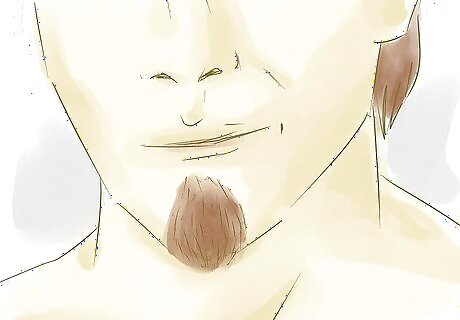
Cultivate a soul patch. A soul patch is a tiny, short beard under your lower lip. This look is favored by jazz musicians and best accompanied by a cool pair of shades. Remain clean-shaven, leaving only a small downward-facing triangle of hair that extends from your lower lip to a spot above your chin. Try different lengths with this look. A short soul patch can be barely-noticeable, while a longer one can create an air of mystery.
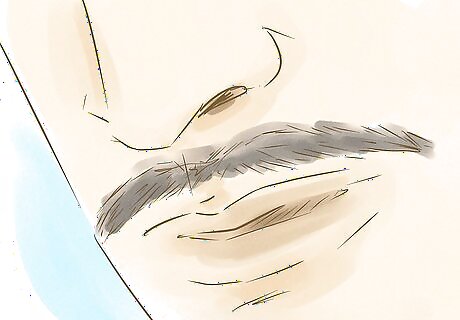
Creep your friends out with a pencil 'stache. This moustache is famously associated with director John Waters. Shave your beard down to just a mustache. Trim your mustache using a pair of clippers and a very short guard. Then, with a safety razor, shave your mustache except for the portion just above your upper lip. You'll be chasing girls down the street in no time!
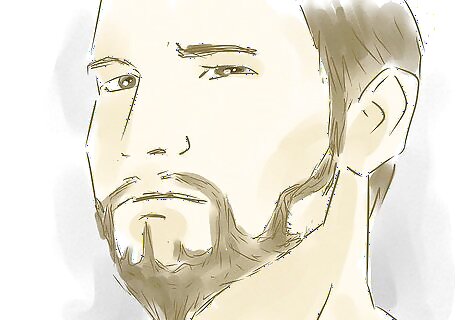
Experiment! Try out different lengths and styles. It'll always grow back. Picking a new style for a beard is subjective. If you don't have any idea at all what you want, go to a barber. You can even bring a picture of something you like to get their opinion. If you plan on shaving your beard off completely, take the opportunity to try a different style for an hour at a time. Eat lunch with a goatee and dinner with a mustache. You might discover that you like one of your new styles.




















Comments
0 comment